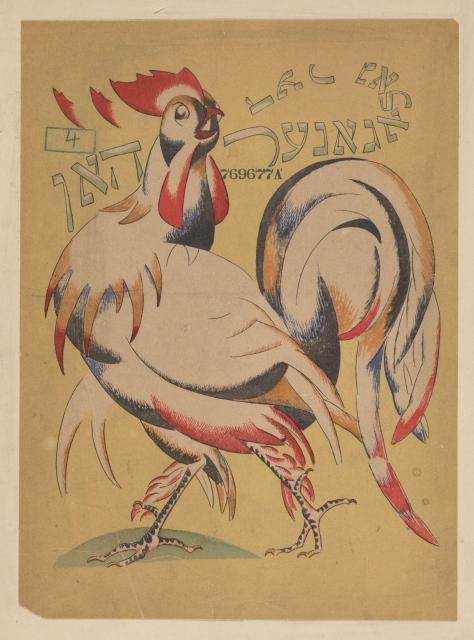
Peretz Markish, 1895–1952 (Author)
Y. (Yosef) Ṭshayḳoṿ, 1888–1979 (Illustrator)
Der Galaganer hon
Berlin: Klal farlag, 1922
The 20th Century: Tragedy and Resilience
The first half of the 20th century was one of the most challenging and tragic periods in Jewish history, marked by unprecedented levels of anti-Semitism and persecution, and the systematic extermination of Jews during pogroms and the Holocaust. But it was also a period of extraordinary cultural resilience, expanding horizons for Jewish education and the development of experimental avant-garde movements in literature, art, and music. Unparalleled cross-cultural exchange inspired many of the artistic works created during this time.
The Dorot Jewish Collection, itself a product of the 20th century, has actively documented the historical and cultural landscape of that time, building a reputation as a comprehensive repository of the contemporary sources that has allowed for a deeper and broader contextualization of the 20th century, the two World Wars, the Holocaust, which claimed the lives of six million Jewish people, and the establishment of the state of Israel.
This section presents aspects of the historical events of this period through the prism of selected items from our collections. These include the personal archives of two young girls who survived the Holocaust, as well as a photograph from the Offenbach Archival Depot in the U.S. Zone of Allied Occupation that shows the unparalleled efforts made to rescue, assess, and distribute the cultural treasures looted by the Nazis in the immediate aftermath of the war.
The story of 20th-century Jewish life continues in Sections 6 and 7, which are dedicated to the Jewish Diaspora in the United States.






